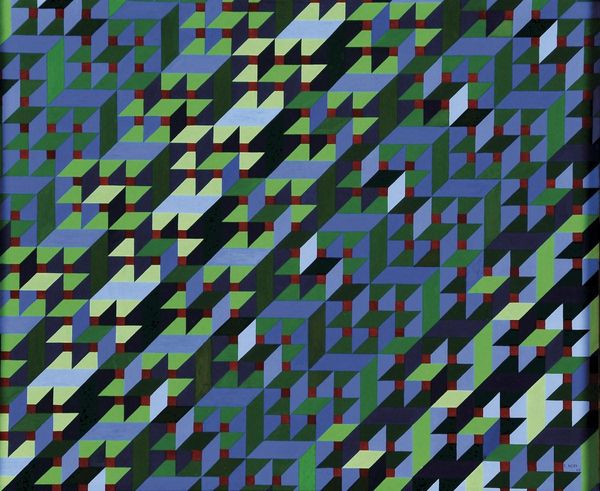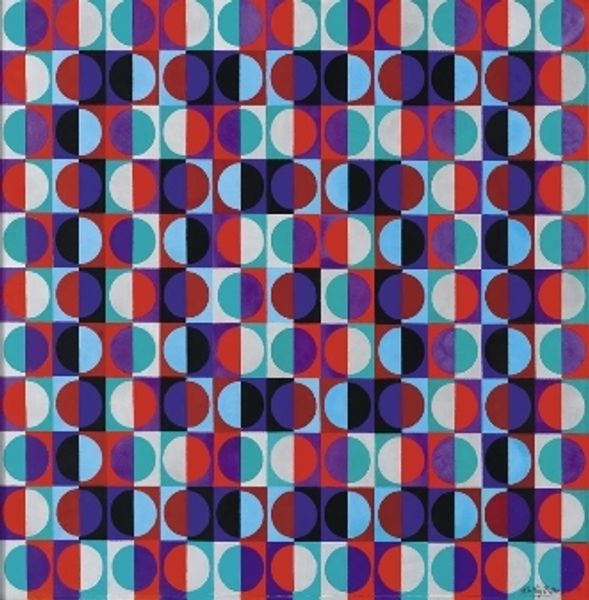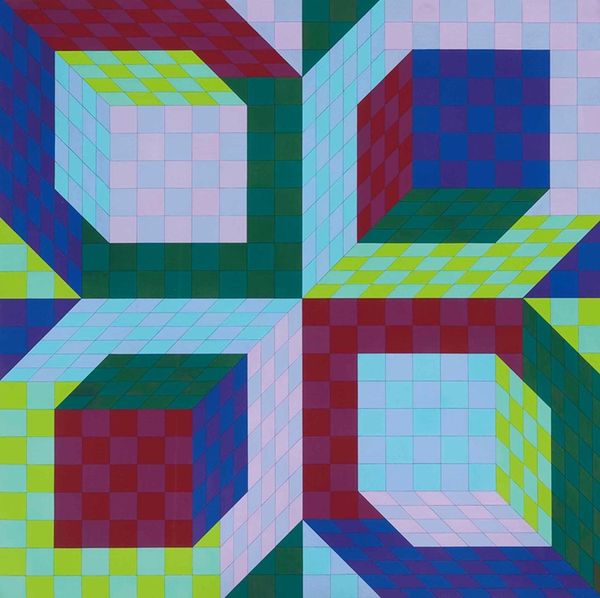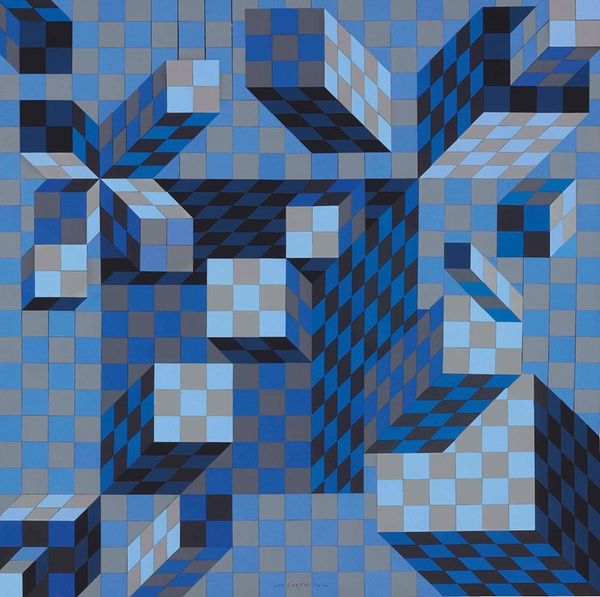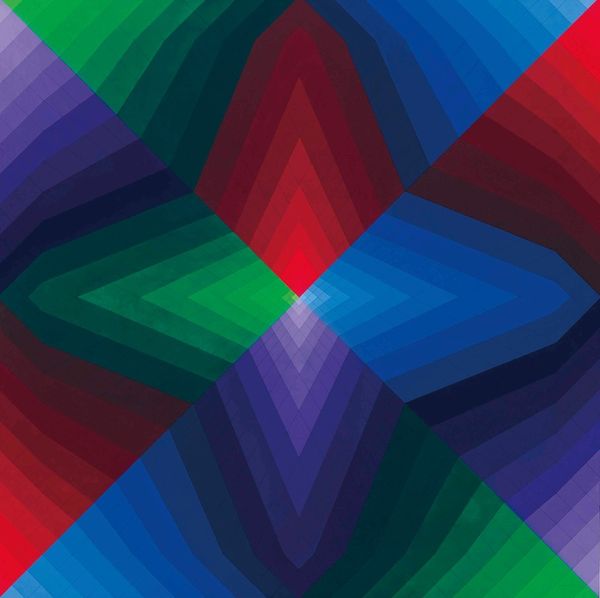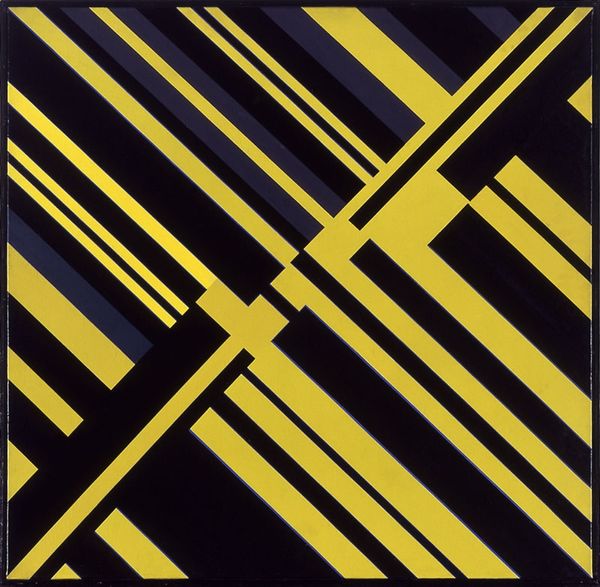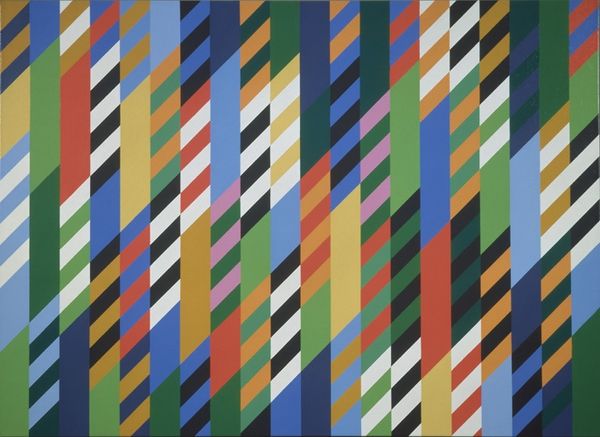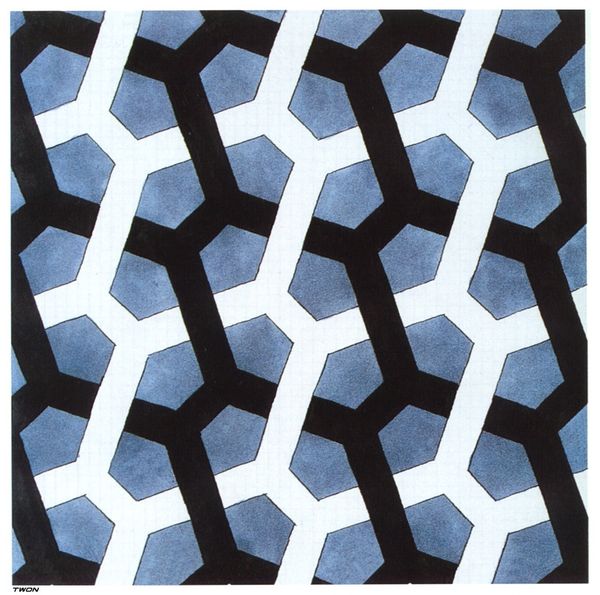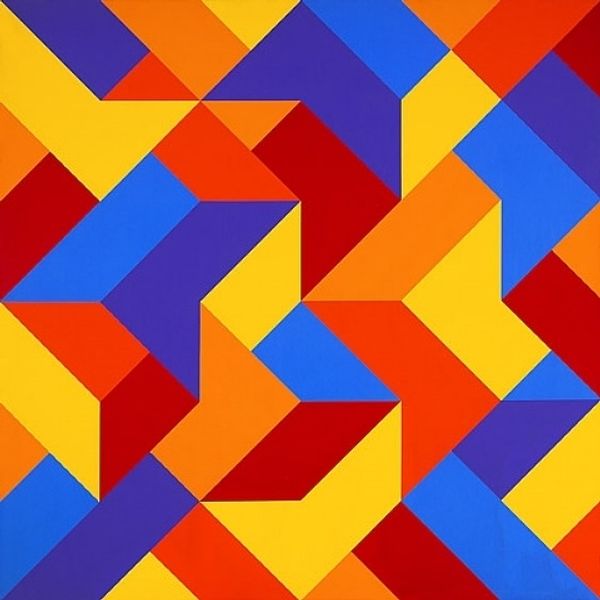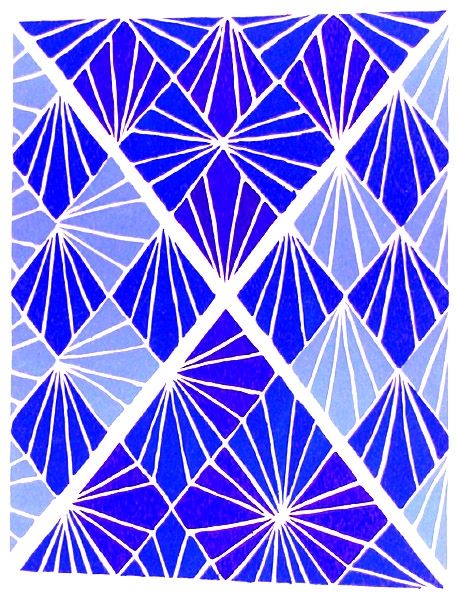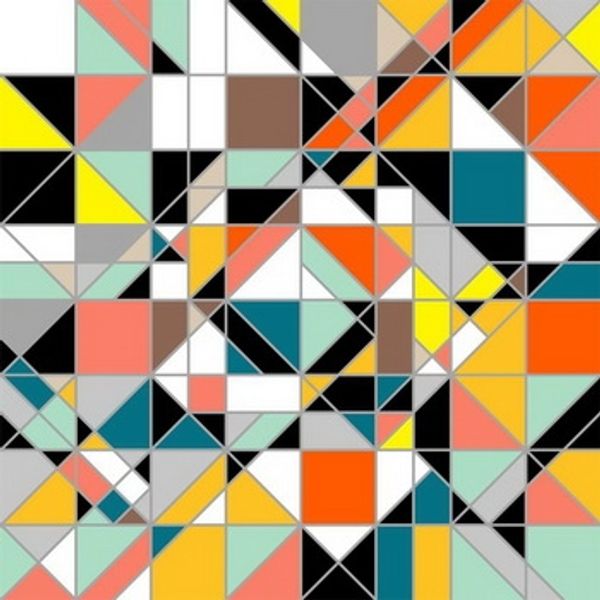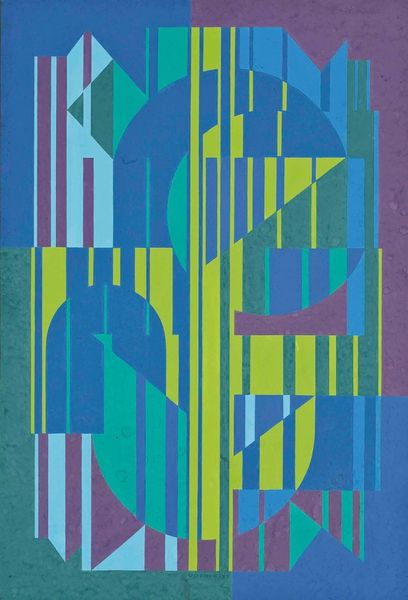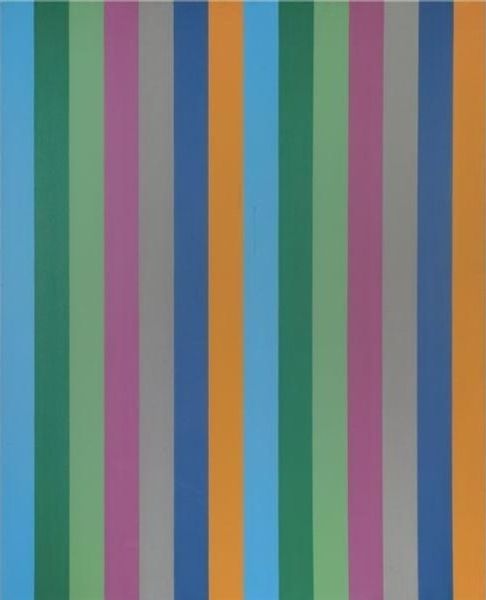
acrylic-paint
#
acrylic-paint
#
geometric
#
abstraction
#
line
Copyright: Eduardo Nery,Fair Use
Editor: Here we have "Modulação Luminosa I," created in 1966 by Eduardo Nery, made using acrylic paint. The color scheme really catches my eye - how all those greens and blues seem to interact. What do you see in this piece, especially considering its historical context? Curator: Well, considering this piece was created in 1966, it’s difficult not to consider the influence of Op Art and the broader interest in geometric abstraction that was so prevalent. The title suggests “luminous modulation,” which, coupled with the hard edges and defined lines, presents a commentary on how light can be represented. Can you see the role of socio-political factors from that period and what effect might they have had? Editor: I hadn't considered a socio-political tie-in, but you're right. Abstraction provided artists freedom, right? The work could become about color, composition, technique, not a representational depiction linked to social issues? Curator: Precisely. In many places across the globe, abstraction offered artists a path that didn’t require adhering to state-sanctioned artistic styles. So the choice *to* create abstraction can itself be read as a political statement. This interest in geometric shapes also appears in architecture, how the building can transform its relation to social dynamics. Don't you think so? Editor: Definitely! It shifts how we understand the public role of art and what purpose it has. Curator: It becomes about an idea, or even an ideal. "Modulação Luminosa I," in that sense, encapsulates a desire for new forms of expression and societal organization. Editor: It’s fascinating how the formal aspects of the work become tied to these wider social dynamics. I think I appreciate it on a different level now. Curator: Agreed! These connections help us see art as an active part of history.
Comments
No comments
Be the first to comment and join the conversation on the ultimate creative platform.
